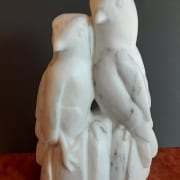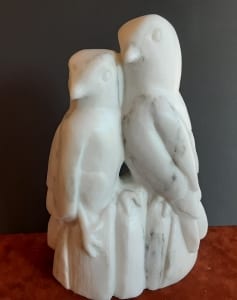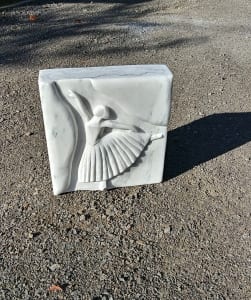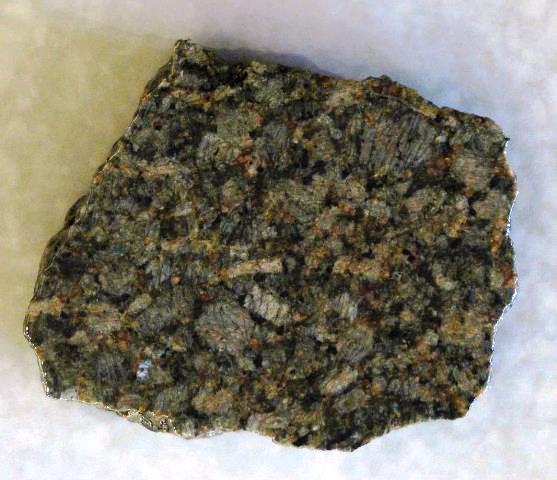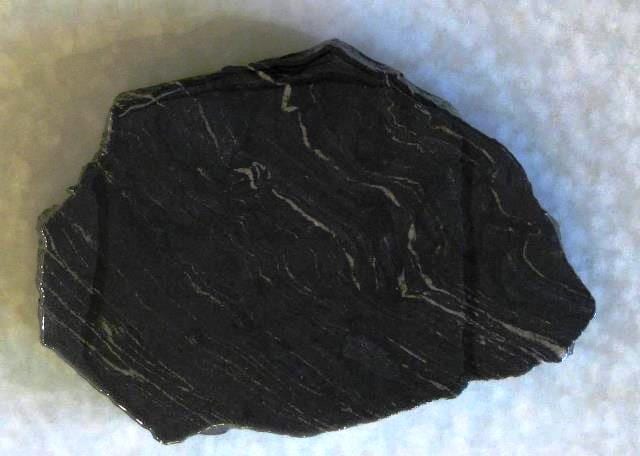No Stone Unturned: The Macro Photography of Valerie Woods

What looks like a scene from a tropical beach is the color and texture of stone, captured in macro photography by Richland artist, Valerie Woods.
“What do you see?”
Depending on which of the four words you emphasize, the meaning of the phrase changes. (Try it; I’ll wait).
For Valerie Woods, it’s a favorite question that she loves to ask, generally with emphasis on the word “you.” A photographer who specializes in images hidden in stone, Woods is fascinated by what individuals see when they take the time to look.
“Underneath the plain veneer of every stone is a hidden beauty carved out by nature and time,” the Richland, WA, artist says.

What looks like an explosion in deep outer space is an image dancing across the surface of stone. Macro photography by Valerie Woods
“In my art, I take a rock that people walk on — no one notices these little river rocks; they won’t delight — but when I look deeper there are entire worlds within them.
“They are full of depth and beauty, and they all have a story to tell.”
Individual and Unique
Just like humans, she adds. We’re all like that, from the homeless person holding the sign in the parking lot to the shopper standing next to us in line, from the neighbor raking leaves in the yard to the angry driver who just flipped us off in traffic.
“We all have depth and beauty and a story to tell. We just have to look under the surface, love each other, and open our eyes.

The illusion of clouds and golden flecks of sunlight dance across the surface of stone in Valerie Woods macro photography image, Twilight.
“I think this is all so relevant in the world we are living in where everyone is so quick to hate anyone who is different. We are different because we are unique, one of a kind. Just like the rocks I photograph.”
Much of Woods’ work is macro photography, which involves taking close up images of tiny things, in this case, a vignette of a small surface area on a rock or stone. She does very little photo editing, so getting the shot right — the angle, the light, the perspective within a limited depth of field — makes or breaks the picture.
“When I first started doing macro photography, I took pictures of every little creature and flower I could find, even a few weeds, and I loved it! I enjoyed capturing the fine details of a dragonfly’s face or a bee’s fuzz.
“Eventually, I turned my lens onto stone when my husband built me a slate fountain. Poor man, he never imagined he would be living with rocks all over the house and yard for the rest of his days.”
Images Hidden in Stone

Fire and shadow, flame and darkness — Valerie Woods’ Portrait in Stone captured the depth of personality.
What caught and grabbed Woods’ attention initially was a shape in one of the slate pieces on the fountain. Intrigued, she took the photo and upon later examination, discerned the image of an elephant.
“That was 12 years ago, and I have been enjoying what I call a ‘treasure hunt with God’ ever since.
“I believe that in His great love for us, he created these images in stone, ready for us to discover.
“Often, I don’t see an image before I start taking pictures. I pick up a rock that looks like it might have something in it, or I like the colors. And I just start looking with my lens and asking Him what is there.
“He shows me people and animals, sea creatures and sunsets, mountain ranges, volcanoes, oceans and forest. I’ve seen angels and celestial images.”
A Face Emerges
One image that struck her most personally she entitled Portrait in Stone. Emerging from the texture of rock is what appears to be a face, one with which Woods closely identifies:
“On one side she’s vibrant, fire and flame, but the other is her silent, deep side. It’s the one people don’t see.
“When I first found this image, I felt as though I was looking at myself. It was as if God created an image of me in stone.”
Woods’ studio is her backyard, kitchen counter, and a desk in her front room. Her subject matter she encounters in walks along the Columbia River, camping, hiking, or even at the grocery store, where she discovers treasures in the rock medians in the parking lot. She ascribes her faith in God as integral to her art, and seeks to impart that sense of love, discovery and acceptance into each of her works.
“I want to share that love,” Woods says, “That love for every single person who takes a breath.
“I want people to see beyond the surface.”
 Valerie Woods is the featured Art Event at Wenaha Gallery from August 2 through August 29, 2022.
Valerie Woods is the featured Art Event at Wenaha Gallery from August 2 through August 29, 2022.
Contact the gallery, located at 219 East Main Street, Dayton, WA, by phone at 509.382.2124 or e-mail art@wenaha.com. Gallery hours are 9 a.m. to 5 p.m. from Monday through Friday, and by appointment. Visit the Wenaha Gallery website online at www.wenaha.com.


